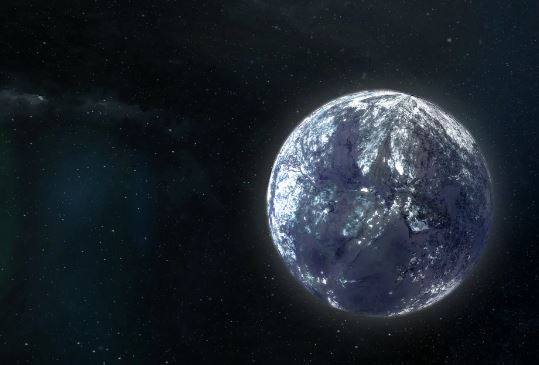Planets that are not orbiting any star are called free-floating planets, and they don’t simply appear out of thin air. Like other planets, they likely originate in the gaseous and dusty nebula that envelops a young star.
These planets are brutally ejected from their heavenly neighbourhoods, in contrast to their terrestrial counterparts.
It was previously estimated by astronomers that billions of planets in the Milky Way had gone wild. The number has been revised upward by trillions by researchers at NASA and Japan’s Osaka University. They found the second Earth-sized free floater ever spotted, and their findings are detailed in two publications submitted for publication in The Astronomical Journal. The researchers concluded that these planets are six times more numerous than worlds circling their own suns.
It has long been known, but little understood, that there are planets out there without star systems. Most of these planets were estimated to be around the size of Jupiter since Jupiter is the largest known planet in our solar system. However, many people disagreed with the result, and even the scientists who announced it were taken aback.
Astronomer David Bennett and his colleagues at NASA’s Goddard Space Flight Centre utilised nine years’ worth of data from New Zealand’s University of Canterbury Mount John Observatory’s Microlensing Observations in Astrophysics telescope to learn more about these rogue planets. Microlensing is the process by which the light from distant stars is bent and enlarged when it passes in front of an exoplanet.
The researchers used empirical models to calculate the range of masses for over 3,500 microlensing events, including stars, stellar remnants, brown dwarfs, and putative planets. (In this case, the data from one of the candidates was sufficient for the scientists to announce the finding of a new rogue Earth.) According to their findings, there are around 20 times as many extrasolar planets as stars in the Milky Way, and planets of Earth’s mass are 180 times more numerous than rogue Jupiters.
Dr. Bennett argued that it is more reasonable to assume that most rogue planets are tiny than to assume that they are Jupiter-size. That’s because it’s generally accepted that collisions between protoplanets are what sends planets on a rogue direction. The impact is so powerful that it flings a person well beyond the boundaries of the new star system.
However, only massive objects have the potential to eject planets from their star systems. If most of these stellar orphans were Jupiter-sized, we should see many so-called super-Jupiters circling host stars. However, these findings imply that planets with less mass are more likely to be ejected.
He said that the Milky Way’s plethora of unattached particles provides evidence that planetary-sized bodies colliding during the creation process “are maybe more common than theorists might have guessed.”
Observations with the Optical Gravitational Lensing Experiment and the Korean Microlensing Telescope Network hinted to the existence of rogue planets, and an astronomer from the University of Warsaw who was not involved in the study, Przemek Mróz, claimed that the data from this group supported those suspicions. He concluded that “low mass free-floating planets are very common in the Milky Way” based on the findings of three separate investigations and three separate lines of evidence.
The question of whether these planets are actually freed or merely flung out to orbits so large that astronomers can’t identify a home star remains open. Dr. Mróz believes that both types are present in the studied population, but that it will be impossible to determine their abundances using microlensing data alone.
The astronomers behind these new research are eagerly anticipating the release of free-floating planet data from the Nancy Grace Roman Space Telescope, a NASA mission scheduled for flight in 2027. Scientists will be able to estimate the mass more directly and rely less on models when this information is combined with that from the European Space Agency’s Euclid Telescope or from well-positioned observatories on the ground.
Are there any of these planets that might support life? Dr. Bennett speculated that they may be, saying that they would be black without a host star but not necessarily freezing. Microbial life in Earth’s deep sea vents is kept alive by the planet’s inner heat, which might be trapped by hydrogen in the planet’s atmosphere and used as a greenhouse effect.
The crew didn’t bother to search for anything beyond the Milky Way. Dr. Bennett said, “But we expect that other galaxies are pretty similar,” suggesting that these misfits may be found all across the cosmos.

